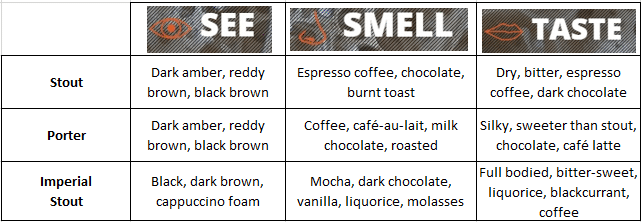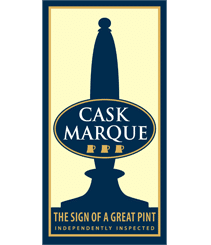I bet you all have a friend or a colleague who tells you they don’t like beer? I know. It’s unfathomable to you and I. But these mad, sad fools need our guidance because their experience or perception of beer has probably been a poor one. We know that not all beer is the same, we know that saying you don’t like beer is akin to saying you don’t like food.
So, in this new series from Annabel Smith, in-house Beer Sommelier at Cask Marque, we’re going to take a light hearted look at a range of beer styles, and help you persuade the uninitiated masses to try a tipple.
*Spoiler alert: some of these beer styles are NOT cask. Gulp!
Stouts & Porters
The darkest beer of them all, stouts and porters get their colour and flavour from the dark grain used to make them – roasted malt, roasted barley, or sometimes other dark grains. From the first sip, expect bold flavours – espresso, chocolate and roasted elements.
Where Did Stouts & Porters Come From?
Porter is actually an older style than stout and was named for the porters who unloaded ships and carried goods around the world’s mightiest metropolis, thus it was the great beer of the 18th and early 19th century London. Stouts derived from the shortening of ‘stout porter’, meaning a strong porter (although this is not necessarily the case!)
Imperial stout was brewed in the 18th century with the most famous being shipped to Russia. They are full bodied, massively malty, very dark and bitter sweet.
So, contrary to popular belief, stouts do not originate in Ireland, but in London! Why London? In a word – water. The minerals and sulphates in the hard water in London create a very dry flavour and mouthfeel in this beer (now that’s one to remember for the pub quiz!)
The Many Myths:
Other than stout originating in Ireland, there are many other myths surrounding this particular beer style. Have you heard that its great for pregnant women and those suffering from iron deficiency as it’s packed full of iron? Well there’s actually more iron in a slice of white bread than there is in a pint of stout! How about stouts being full of calories? No more so than other beers (so less than a pint of milk or orange juice).
As for the Shamrock drawn in the head of a pint of stout: this was very much a cultural thing and one which the Irish dislike to this day. During the late 1920’s and early 1930’s, the USA was subject to prohibition, therefore a lot of Americans descended on Europe, particularly Ireland. Irish bar owners would draw a Shamrock in the pints of stout served to Americans to denote they were an outsider, ie, not native to Ireland. It has NEVER been a brand standard for Guinness to draw this Shamrock, it is all just an urban myth.
Characteristics:

To Serve:
Stouts are a fine partner for oysters and rich, unctuous stews. Grilled meat and sausages – with their smoky, charred character – are a natural companion. Many porters are also a great accompaniment to blue cheese and gamey foods like venison. For deserts, chocolate-based ones are beautifully complemented by these dark beers. Try a really rich chocolate cake with a Russian imperial stout for a perfect treat – delicious!
Like our beer styles blog? Read our ones on Pale Ales, Wheat Beer, Trappist & Abbey and Lager.


